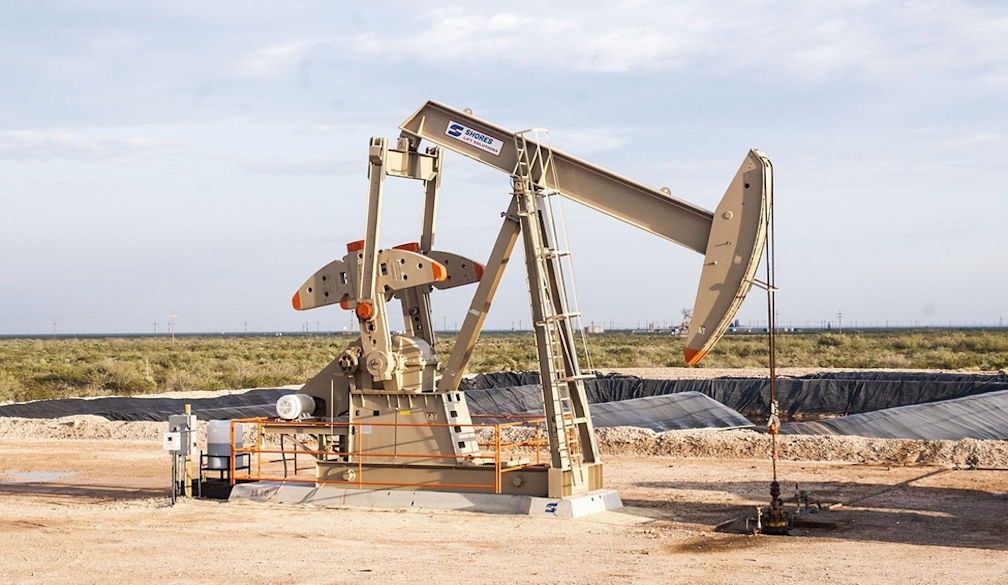Oil and Petroleum Products Explained: The Power Behind Our Lives

Introduction
Are you curious about the fascinating world of oil and petroleum products? Wondering how this precious resource powers our lives? Look no further! In this article, we will provide a comprehensive explanation of oil and its uses.
Oil, often referred to as "black gold," is a naturally occurring fossil fuel that has been vital to human civilization for centuries. This versatile substance is formed from the remains of plants and animals that lived millions of years ago. But what makes oil so valuable? Well, its energy-rich composition makes it an excellent fuel for various industries and transportation.
From gasoline that fuels our cars to diesel that powers heavy machinery, oil plays a crucial role in our day-to-day lives. But that's not all - oil is also a key ingredient in the production of plastics, chemicals, and even cosmetics.
In this article, we will delve deeper into the diverse uses of oil and petroleum products, exploring their impact on the environment, economy, and our everyday routines. Join us as we unravel the mysteries of oil and discover just how significant this natural resource is to our world. So, let's dive in!
The Importance of Oil in the Modern World
Oil is undeniably one of the most important resources in the modern world. Its impact can be felt in almost every aspect of our lives. In fact, it is estimated that more than 90% of global transportation relies on oil-based fuels. Whether it's powering cars, ships, or airplanes, oil keeps the world moving.
Furthermore, oil is also crucial for the production of electricity. Many power plants generate electricity by burning oil or using it to fuel turbines. This energy source is not only reliable but also relatively affordable, making it a preferred choice for many countries.
But the significance of oil extends beyond transportation and energy. It is also a key component in various industries, including manufacturing, agriculture, and construction. Oil-based products such as lubricants, solvents, and waxes play a vital role in the smooth operation of machinery and equipment.
With its versatility and abundance, oil has become a driving force behind economic growth and development. The countries rich in oil reserves often enjoy significant revenue from its production and export, making it a valuable asset for their economies.
Despite its importance, the world's dependence on oil also poses challenges. The limited supply of this non-renewable resource and its impact on the environment have led to a growing need for alternative energy sources. In the following sections, we will explore these issues in more detail.
How Oil is Formed and Extracted
Oil is the result of millions of years of geological processes. It is formed from the remains of plants and animals that lived in ancient oceans and seas. Over time, these organic materials were buried under layers of sediment, subjected to heat and pressure, and transformed into hydrocarbons.
The process of oil extraction begins with the identification of potential oil fields. Geologists study rock formations and use seismic imaging to locate areas where oil is likely to be trapped. Once the oil field is identified, drilling rigs are used to bore deep into the earth's surface.
Drilling can be a complex operation that requires advanced machinery and technology. The drilling rig penetrates through layers of rock until it reaches the oil reservoir. At this point, the pressure inside the reservoir forces the oil to flow up the wellbore, where it can be collected.
To extract oil efficiently, various techniques are employed depending on the characteristics of the oil field. In some cases, natural pressure is sufficient to bring the oil to the surface. In others, secondary methods such as water or gas injection are used to enhance oil recovery. Advanced technologies like hydraulic fracturing, or fracking, have also revolutionized oil extraction from unconventional sources like shale formations.
The extraction process is not without its challenges. Environmental concerns, such as the potential for oil spills and groundwater contamination, have prompted stricter regulations and safety measures in the industry. Nonetheless, oil extraction remains a critical process for meeting the world's energy demands.
Different Types of Petroleum Products
Oil is a complex mixture of hydrocarbons, and its composition can vary depending on its source and refining process. Through refining, different fractions or components are separated from crude oil to produce a wide range of petroleum products. Let's take a closer look at some of the most common types:
Gasoline
Gasoline, also known as petrol, is perhaps the most well-known petroleum product. It is widely used as a fuel for internal combustion engines, primarily in cars and motorcycles. Gasoline is highly flammable and volatile, making it an ideal fuel for spark-ignition engines.
The production of gasoline involves refining crude oil and removing impurities. It goes through several processes, including distillation, catalytic cracking, and reforming, to enhance its octane rating and improve its performance. Gasoline is typically blended with additives to enhance its combustion properties and meet regulatory standards.
Diesel
Diesel fuel is another essential petroleum product. It is commonly used in transportation, particularly in heavy-duty vehicles like trucks, buses, and locomotives. Diesel engines operate on compression ignition, meaning the fuel is ignited by the heat generated from compressing the air in the combustion chamber.
Like gasoline, diesel is produced through refining crude oil. However, the refining process for diesel involves fewer distillation steps and more emphasis on removing impurities and increasing its cetane rating. Diesel fuel is known for its high energy density and efficiency, making it a preferred choice for long-haul transportation.
Jet Fuel
Jet fuel, also known as aviation turbine fuel (ATF), is specially formulated for use in jet engines. It is a highly refined petroleum product that meets rigorous specifications to ensure safe and efficient aviation operations. Jet fuel needs to have a low freezing point, high flash point, and excellent thermal stability to withstand the extreme conditions encountered during flight.
The production of jet fuel involves refining and processing crude oil to remove impurities and improve its performance characteristics. It undergoes various treatments, including hydrotreating and hydrocracking, to achieve the desired properties. Jet fuel plays a vital role in the aviation industry, enabling the transportation of people and goods across the globe.
Heating Oil
Heating oil, also known as fuel oil or kerosene, is used for residential and commercial heating purposes. It is typically stored in tanks and used in furnaces, boilers, and space heaters. Heating oil is similar to diesel fuel but is usually of a lower grade and has a higher sulfur content.
The production of heating oil involves refining crude oil and treating it to remove impurities, reduce sulfur content, and improve its combustion properties. The specific composition of heating oil can vary depending on regional regulations and climate conditions.
These are just a few examples of the many petroleum products derived from oil. Others include lubricants, asphalt, waxes, and various chemicals used in industries such as pharmaceuticals, plastics, and cosmetics. The versatility of oil and its derivatives is truly remarkable, enabling countless applications in our daily lives.
Common Uses of Oil and Petroleum Products
Oil and petroleum products have become an integral part of our daily routines. From the moment we wake up to the time we go to bed, we encounter numerous products that rely on oil. Let's explore some of the most common uses:
Transportation
As mentioned earlier, oil fuels the majority of transportation worldwide. Whether it's cars, trucks, airplanes, ships, or trains, most vehicles rely on oil-based fuels to operate. Gasoline and diesel are the primary fuels used in internal combustion engines, enabling us to travel long distances efficiently.
The transportation sector heavily depends on oil due to its energy density and portability. The high energy content of oil fuels allows vehicles to travel longer distances without refueling. Additionally, the existing infrastructure and widespread availability of gasoline and diesel make them convenient choices for transportation fuels.
Power Generation
Oil also plays a role in power generation, particularly in regions where other energy sources are limited. Many power plants use oil as a fuel to generate electricity. It is often used as a backup or peaking fuel, providing additional capacity during times of high demand or when other energy sources are unavailable.
While the use of oil for power generation has decreased in some countries due to environmental concerns and the availability of cleaner alternatives, it still remains an important source of electricity in certain regions. Advances in technology have made oil-fired power plants more efficient and environmentally friendly, reducing emissions and improving overall performance.
Industrial Applications
Oil and petroleum products are indispensable in various industrial applications. Lubricants, for example, are essential for reducing friction and protecting machinery from wear and tear. They are used in engines, gearboxes, hydraulic systems, and other mechanical components to ensure smooth operation and prolong the lifespan of equipment.
Additionally, oil-based products such as solvents, adhesives, and coatings are widely used in industries like manufacturing, construction, and chemicals. These substances help with cleaning, bonding, and finishing processes, contributing to the production of a wide range of goods.
Plastics and Packaging
Oil is a key ingredient in the production of plastics and packaging materials. Petrochemicals derived from oil, such as ethylene and propylene, are used as building blocks for manufacturing various types of plastic products. These plastics are used in a multitude of applications, including packaging, automotive parts, electronics, and construction materials.
Plastics offer numerous advantages, including durability, flexibility, and lightweight properties. They have revolutionized many industries and have become an integral part of our modern lives. However, the widespread use of plastics has also raised concerns about their impact on the environment and the need for sustainable alternatives.
Cosmetics and Personal Care Products
Oil is not just about fuel and industrial applications. It also finds its way into our daily personal care products. Many cosmetics, skincare items, and toiletries contain petroleum-derived ingredients. These ingredients can be found in products such as moisturizers, lotions, lip balms, and even makeup.
Petroleum-based ingredients, such as mineral oil and petrolatum, are used in these products due to their moisturizing and protective properties. They help lock in moisture, prevent water loss from the skin, and create a smooth texture. While these ingredients have faced some scrutiny, many alternatives are now available for those seeking more natural or eco-friendly options.
These are just a few examples of how oil and petroleum products are integrated into our daily lives. From the moment we wake up and use personal care products to the transportation we rely on to reach our destinations, oil plays a significant role in powering our routines.
Environmental Impact of Oil and Petroleum Products
While oil and petroleum products have undoubtedly brought immense benefits to human civilization, they also come with significant environmental challenges. The extraction, production, and consumption of oil can have adverse effects on ecosystems and contribute to climate change. Let's explore some of the environmental impacts:
Greenhouse Gas Emissions
The burning of oil-based fuels releases carbon dioxide (CO2) and other greenhouse gases into the atmosphere. These gases trap heat, leading to global warming and climate change. The transportation sector, which heavily relies on oil, is a major contributor to greenhouse gas emissions.
Efforts to reduce these emissions have led to the development of more fuel-efficient vehicles, the promotion of alternative fuels, and the adoption of stricter emissions standards. However, the transition to cleaner energy sources remains a challenge, particularly in sectors where oil is deeply ingrained.
Air and Water Pollution
The extraction, refining, and transportation of oil can result in air and water pollution. Oil spills, for instance, can have devastating effects on marine ecosystems, damaging habitats and threatening the survival of marine life. Spills can also contaminate water sources, endangering drinking water supplies and aquatic ecosystems.
Furthermore, the combustion of oil-based fuels releases pollutants into the air, contributing to air pollution and its associated health risks. Emissions from vehicles and power plants can lead to smog, respiratory problems, and other adverse effects on human health.
Habitat Destruction and Wildlife Impact
The exploration and extraction of oil can lead to habitat destruction and disruption of ecosystems. Drilling operations can disrupt wildlife habitats, displace species, and disturb delicate ecosystems. Pipelines and infrastructure development can fragment habitats and disrupt migratory patterns.
The release of pollutants into the environment can also harm wildlife, both directly and indirectly. Animals may come into contact with oil spills or contaminated water, leading to health issues or even death. Additionally, the loss of natural habitats can have long-term consequences for biodiversity and ecological balance.
Efforts are being made to minimize these impacts through improved technologies, stricter regulations, and increased environmental awareness. However, mitigating the environmental effects of oil and petroleum products remains an ongoing challenge.
Advancements in Oil Production and Refining Technologies
The oil industry has witnessed significant advancements in production and refining technologies over the years. These innovations have improved efficiency, reduced environmental impact, and expanded the availability of oil resources. Let's explore some of the key developments:
Enhanced Oil Recovery Techniques
Enhanced oil recovery (EOR) techniques have revolutionized oil production by enabling the extraction of oil from reservoirs that were previously considered uneconomical. EOR involves injecting various substances into the reservoir to increase oil recovery. These substances can include steam, carbon dioxide, or chemicals that alter the properties of the oil and reservoir.
Common EOR methods include steam flooding, gas injection, and chemical flooding. These techniques help to displace oil from the reservoir and improve the flow of oil to the wellbore. EOR has allowed for increased production rates and improved recovery factors, maximizing the utilization of existing oil fields.
Offshore Drilling Technology
Offshore drilling has opened up new frontiers for oil exploration and production. Advances in drilling technology, such as offshore platforms and subsea systems, have enabled the extraction of oil from deepwater and ultra-deepwater environments. These offshore resources were previously inaccessible due to technological limitations.
Offshore drilling offers the potential for significant oil reserves, but it also presents unique challenges. Harsh weather conditions, environmental concerns, and safety considerations require careful planning and adherence to strict regulations. Nonetheless, offshore drilling has expanded the global oil supply and contributed to meeting the growing energy demand.
Refining Processes and Catalytic Converters
Refining processes have become more sophisticated, allowing for the production of a wider range of petroleum products with improved quality. Advanced techniques such as catalytic cracking, reforming, and hydrotreating have enhanced the efficiency and yield of refining operations.
Additionally, the introduction of catalytic converters in vehicles has played a crucial role in reducing emissions and improving air quality. Catalytic converters contain catalysts that facilitate the conversion of harmful pollutants into less harmful substances, significantly reducing the emission. More info
























